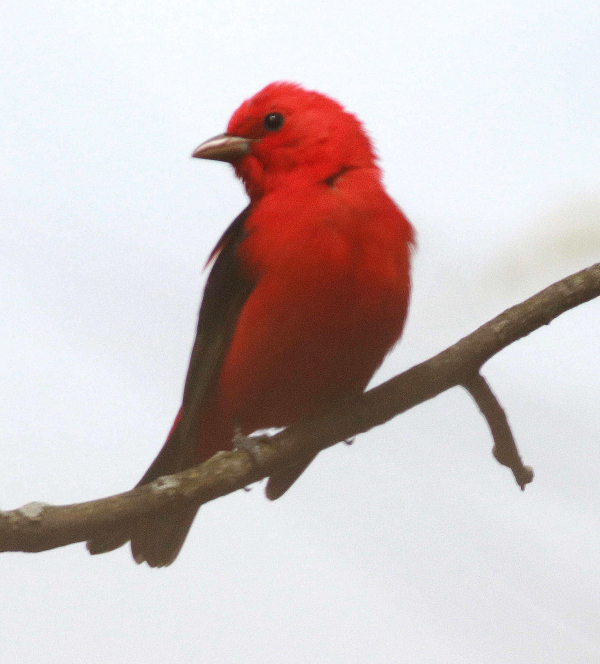
As an example, start by clicking the link provided for your favored tanager to view the interactive animated distribution and abundance maps (Scarlet Tanager photo by Paul Konrad).
|
As birds migrate into our favorite birding locations and even into our yards, it’s natural to wonder where did these birds nest, and at the same time, where will these birds migrate to? Those questions are relatively simple and fairly easy to answer, but today we have some remarkably sophisticated information resources that provide amazing details about North American birds, as well as many birds worldwide. New animated distribution and abundance maps show weekly snapshots of where each species can be found throughout the year, called “eBird Status and Trends.”
These are powerful new tools for birders, biologists, and conservationists and a realization of the original vision for eBird to monitor the status of bird populations across the continent in real time. These animated maps utilize the wealth of information provided in observations recorded in eBird by more than 120,000 participating birders across North America, used in concert with satellite imagery from NASA. This most impressive resource created by the Cornell Lab of Ornithology shows the abundance of species in locations along their migration route – and it’s very informative and quite fun to use.
First, from an expansive list of birds, click on the species of your choice, at Explore all Status and Trends species - eBird Science
The range map of the species you have selected will appear, showing the birds’ color-coded seasonal distribution across the full range of the species. You can zoom into the map to see movements across different areas, including your specific part of the species’ range.
As examples, we provide the 2 primary tanagers found in the United States and Canada below for a quick reference: Scarlet Tanager – Scarlet Tanager - Abundance - eBird Status and Trends and Western Tanager – Western Tanager - Abundance - eBird Status and Trends
Now it gets really interesting – when you have the map open for one of the tanager species, notice the green button at the top of the page marked “Abundance.” Next to it, click the button marked “Weekly,” which will reveal a map showing the location of the species during the month of January.
Then, on the right side of the screen, notice the blue button with an arrow; click it to animate the distribution of the species throughout the year, showing the route, timing, and abundance of birds passing through areas during their spring migration north, their range and abundance during the nesting season, followed by their migration route and timing during fall migration and their return to their winter range.
After you see the annual cycle animated a couple times, note that you can stop the animation at any point simply by clicking on the map, this is helpful when you wish to study a certain period of the year, which is indicated in a box and graph off the right of the map.
We will let you take it from there as you investigate other options available using these impressive animated range maps that show the relative abundance of each species on a weekly basis throughout the year – they are truly amazing when you think of it!